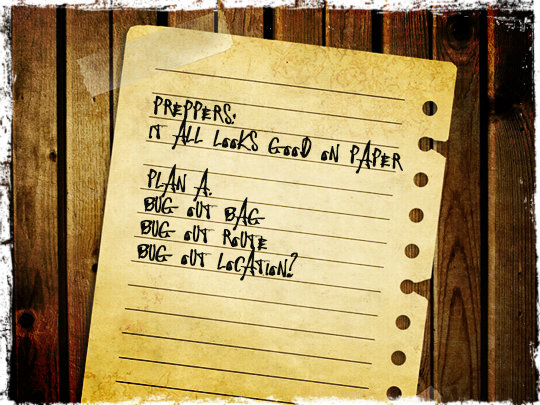
But Things Can Go To Hell in a Hurry
Those new to prepping may sometimes fall prey to overheated talk and “hype” when it comes to bugging out. Some articles may give you the impression that because they recommend a bug-out bag then bugging out is necessary regardless of what the situation is. There may be a time when you would have to bug-out, but only you can decide when is best for you and yours.
A bug-out bag like any precautionary action is an insurance policy that you hope you will never have to use but is there nonetheless.
Just because you have a bug-out bag does not mean you have to bug-out. The supplies in your bag will not go to waste during an emergency. You can even call it a bug-in-bag if you shelter in place.
What will set you apart is the ability to reason through the problem and make decisions that benefit you and your family. To be able to make good decisions you need information. Facts and figures and a good plan is what will help you and your family survive.
The United States has a total land area of nearly 2.3 billion acres. Broken down by use there is forest-use land taking up 651 million acres (28.8 percent). Grassland pasture and range land accounts for 587 million acres (25.9 percent). Cropland use is at 442 million acres (19.5 percent). Special uses that include parks and wildlife areas are at 297 million acres (13.1 percent). Miscellaneous other uses are 228 million acres (10.1 percent). Urban areas account for the least amount coming in at 60 million acres (2.6 percent). The federal government owns 28 percent of land in the United States (USDA, 2012).
Parks and wildlife areas would be national parks and other public lands where it is assumed that the natural resources would be protected, and 297 million acres is substantial. Those looking to bug-out during a crisis that do not have a pre-determined safe haven would logically look towards public lands that would likely have resources, such as water and wild game.
There is only 60 million acres of urban land, cities towns and municipalities. This is where the vast majority of people live, in metropolitan areas, crowded places and the most likely targets for an attack on the United States.
Common sense tells you that once the cities collapse many people will flee and of course flee to the wide-open spaces. However, if the crowd moves from one area to another you still have the same crowds, just relocated. You essentially have people fleeing one crisis into the jaws of another.
There may be temporary relocations because of a chemical attack for example. You would assume that damage to buildings and structures would be minimal if any damage at all. You could come back in a matter of days. Bombings, nuclear attacks, rioting, looting and so on may mean you cannot come back for an extended period if at all, so you would need a plan for this.
It would not take long for people to gather and decide to rebuild even if it is in another location, and this is what most people would do if the event were nationwide and catastrophic enough. This is human nature. The new locations may be far from cities, in the areas once thought remote. People will gather in areas that everyone else thought would be good places to bug-out to, because of the resources, such as water and game and possibly areas that could sustain crops.
Sounds easy enough, and looks doable when written down, but bugging-out would be far from easy. If you were a single person, you could conceivably grab your bag and head for the hills. You would need to be in top physical shape however, have extensive wilderness survival training and the right tools and supplies along with a strong will.
There is 651 million acres of forestland, plenty of land to get lost in. The only problem is you cannot just stake out your forty acres, collect your mule and start playing house. You do not own the land and if you do own a few acres that you can escape to, you will essentially be right back to where you started. People will crowd around you. Your leisurely days of hunting wild game and relaxing by the riverbank fishing will not last long.
Cropland 442 million acres, this does not necessarily mean it is all crops but simply suitable for raising crops. You cannot grow enough food in heavily forested areas to support even a single person. The game will be scarce, and waterways will have all manner of people wading in and out polluting the water upstream from your safe haven. Fishing will no longer be a soothing endeavor.
Unless the catastrophe shuts the entire government down and law and order does not exist, as we know it then you probably would be better off staying put. If the disaster is nationwide and affects every city and town then there is probably nowhere to flee to in the short-term anyway.
Eventually public and some of the private land would have to be put to use for the common good. People will have to be fed so croplands will be utilized, wild game will be hunted to feed communities, and large bodies of water will be guarded so every person has access and so rationing of water is likely.
Some people tend to assume they are the only ones with the ideas. Some may imagine a remote cabin somewhere miles off the main road. No one could possibly find it during a crisis. It is only remote because no one lives nearby, yet. It is not remote because it is some yet to be discovered area that time has forgotten. Virtually every square foot of land in this country is on a map and accessible by anyone.
USDA. (2012, August 15). Retrieved 2014, from http://www.ers.usda.gov/publications/eib-economic-information-bulletin/eib14.aspx#.U7lPTPldWSo